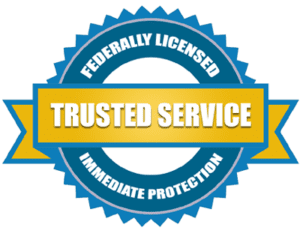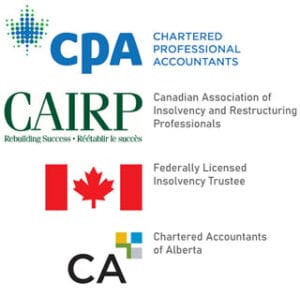WHAT HAPPENS TO YOUR DEBT WHEN YOU FILE BANKRUPTCY IN ALBERTA?
What happens to your debt when you file bankruptcy depends on the nature of the debts you hold. People’s debts generally fall into two categories, secured and unsecured debts.
SECURED DEBT
Debts where creditors have taken or placed a lien on your asset(s), and who have a right of repossession, are considered secured debts. If you surrender, or give up, the asset liened by the creditor at the beginning of your bankruptcy, you no longer have an obligation to pay any portion of that debt.
If you want to keep a secured asset and you make payments to the secured creditor after filing bankruptcy, you have reinstated the contract and will have to pay the entire debt as previously agreed. A secured creditor may elect to enforce its security and repossess the asset, notwithstanding that you have filed bankruptcy.
UNSECURED DEBT
In most cases, the majority of one’s debt, such as credit card debt, personal loans, unpaid utilities, trade creditors, etc., and yes, even income tax debts, are unsecured debts, and in a bankruptcy, are fully dischargeable or fully forgivable.
If you have a particular debt that is on concern to you, you should feel free to contact an Alberta Bankruptcy Trustee.
DEBTS NOT COVERED / DISCHARGED
The Bankruptcy and Insolvency Act in particular, Section 178 of the Act, defines certain debts which are not dischargeable or which will survive a bankruptcy, and which must be paid, even if a person has filed bankruptcy. These debts include the following:
- Debts that originate as a consequence of fraud, theft, embezzlement or misappropriation;
- Debts related to fines or penalties imposed by a Court;
- Debts related to Restitution Orders for personal injury, assault, damage to property, theft, etc.;
- Monthly alimony, maintenance or child support payments and related debts for arrears, if any;
- Canada Student Loan or other Student Loans, if you attended school less than 7 years ago;
- Certain government over-payments, and monies received while ineligible, which typically include Emergency Relief Benefits, Employment Insurance over-payments, Human Resources Disability Payments, or WCB payments. The portion of the debt repayable after bankruptcy is generally limited to the principal over-payment received and generally does not include the interest or penalties assessed against you.
- As the law can be complicated in this area, we recommend that you contact an Alberta Bankruptcy Trustee, who can review these debts with you;
If you do not have any of the debts identified above as “Section 178 Debts”, it is very likely that all your debts can or will be fully dischargeable. Please do not hesitate to contact an Alberta Bankruptcy Trustee for a complete assessment of your debts and an explanation of what happens to your debts when you file bankruptcy in Alberta.



